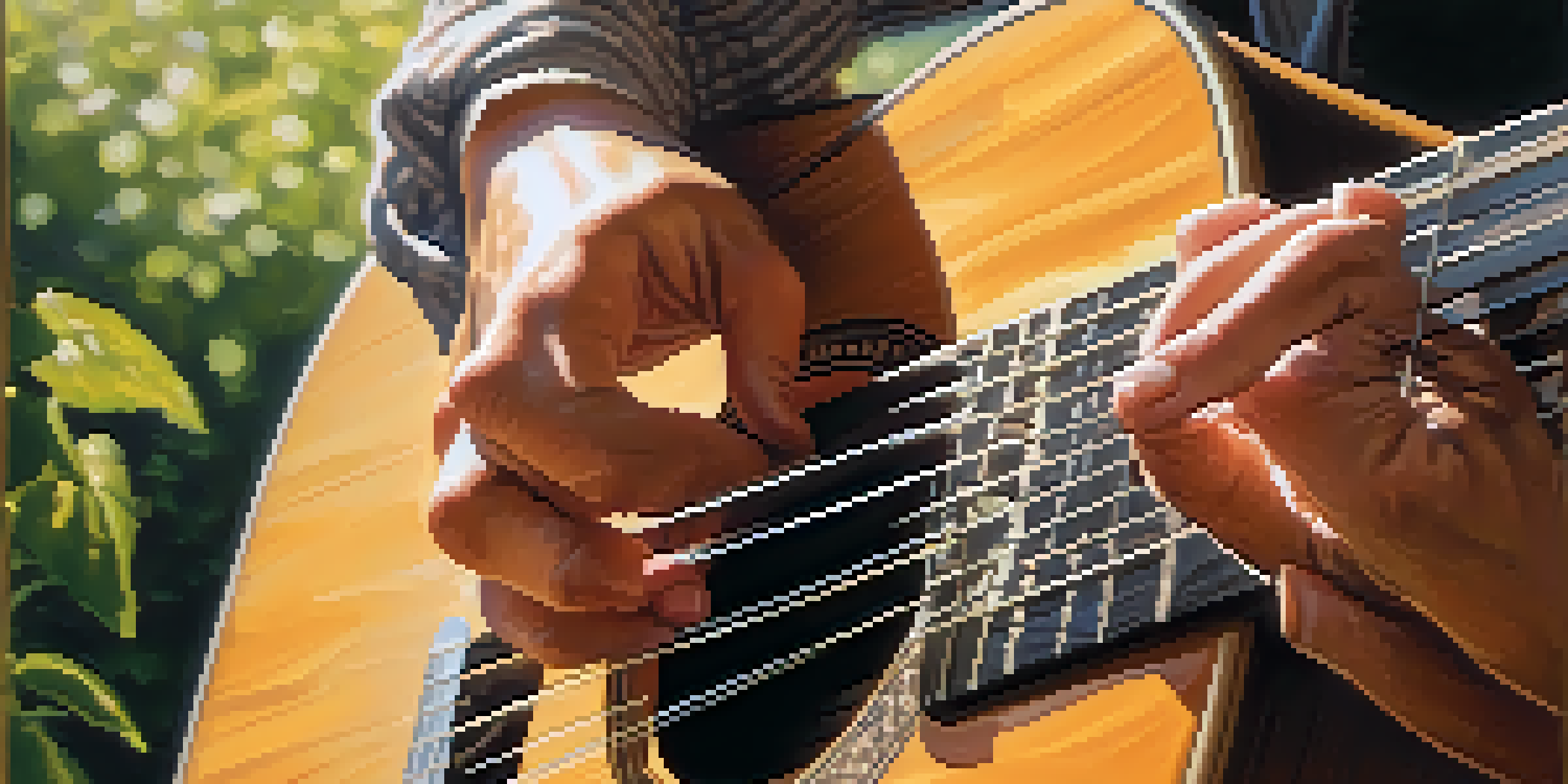The Role of World Music in Shaping Fingerstyle Guitar

Understanding Fingerstyle Guitar's Unique Techniques
Fingerstyle guitar is a technique that involves plucking the strings with the fingers rather than using a pick. This approach allows for intricate melodies and harmonies to be played simultaneously, creating a rich sound. It's like using a painter's brush to create layers of color, where each finger becomes a different tool in your musical palette.
The Global Influence of Traditional Music
World music encompasses a variety of genres from different cultures, each with its own unique rhythmic patterns and melodic structures. Traditional music from places like Africa, India, and South America can introduce fingerstyle guitarists to new ways of thinking about rhythm and melody. For example, the use of polyrhythms in African music can inspire guitarists to incorporate complex timing into their playing.
Fingerstyle Guitar's Unique Techniques
This technique allows for intricate melodies and harmonies, creating a rich sound that showcases the player's musical range.
Incorporating Rhythmic Patterns from Various Cultures
Many fingerstyle guitarists draw inspiration from the rhythmic patterns found in world music. For instance, the use of the 'clave' rhythm in Cuban music can be adapted to create a lively groove on the guitar. By experimenting with these rhythms, guitarists can develop a more dynamic style that reflects a fusion of cultural influences.
Melodic Inspiration from Global Folk Traditions
Folk music from around the world often features beautiful, simple melodies that are perfect for fingerstyle guitar. These melodies can be used as a foundation for improvisation or as a base for creating original compositions. For example, the haunting melodies of Irish folk music can lead a guitarist to explore new emotional depths in their playing.
Cultural Rhythms Enhance Playing
Incorporating rhythmic patterns from world music can inspire fingerstyle guitarists to develop a dynamic and innovative playing style.
The Role of Improvisation in World Music
Improvisation is a key element in many world music traditions, allowing musicians to express their creativity in real-time. Fingerstyle guitarists can adopt this practice, using techniques learned from various cultures to create spontaneous compositions. This not only enhances their playing but also connects them to the global community of musicians.
Collaborating with Musicians from Diverse Backgrounds
Collaboration with musicians from different cultural backgrounds can lead to exciting new sounds in fingerstyle guitar. By jamming with a sitar player or a percussionist, guitarists can learn to blend their styles and incorporate new techniques. This collaborative spirit reflects the essence of world music, where cultural exchange leads to innovation.
Global Collaboration Fuels Innovation
Collaborating with musicians from diverse backgrounds leads to exciting new sounds and techniques in fingerstyle guitar.
The Influence of Technology on Fingerstyle Guitar
In today’s digital age, access to world music has never been easier. Online platforms allow fingerstyle guitarists to explore various genres and techniques from around the globe. This accessibility opens up a world of possibilities, enabling musicians to incorporate diverse influences into their own unique sound.
The Future of Fingerstyle Guitar in a Global Context
As fingerstyle guitar continues to evolve, the influence of world music will undoubtedly play a significant role. The blending of styles can lead to new genres and innovative techniques that keep the art form fresh and exciting. Ultimately, this fusion reflects the interconnectedness of our global society and the rich tapestry of musical traditions.